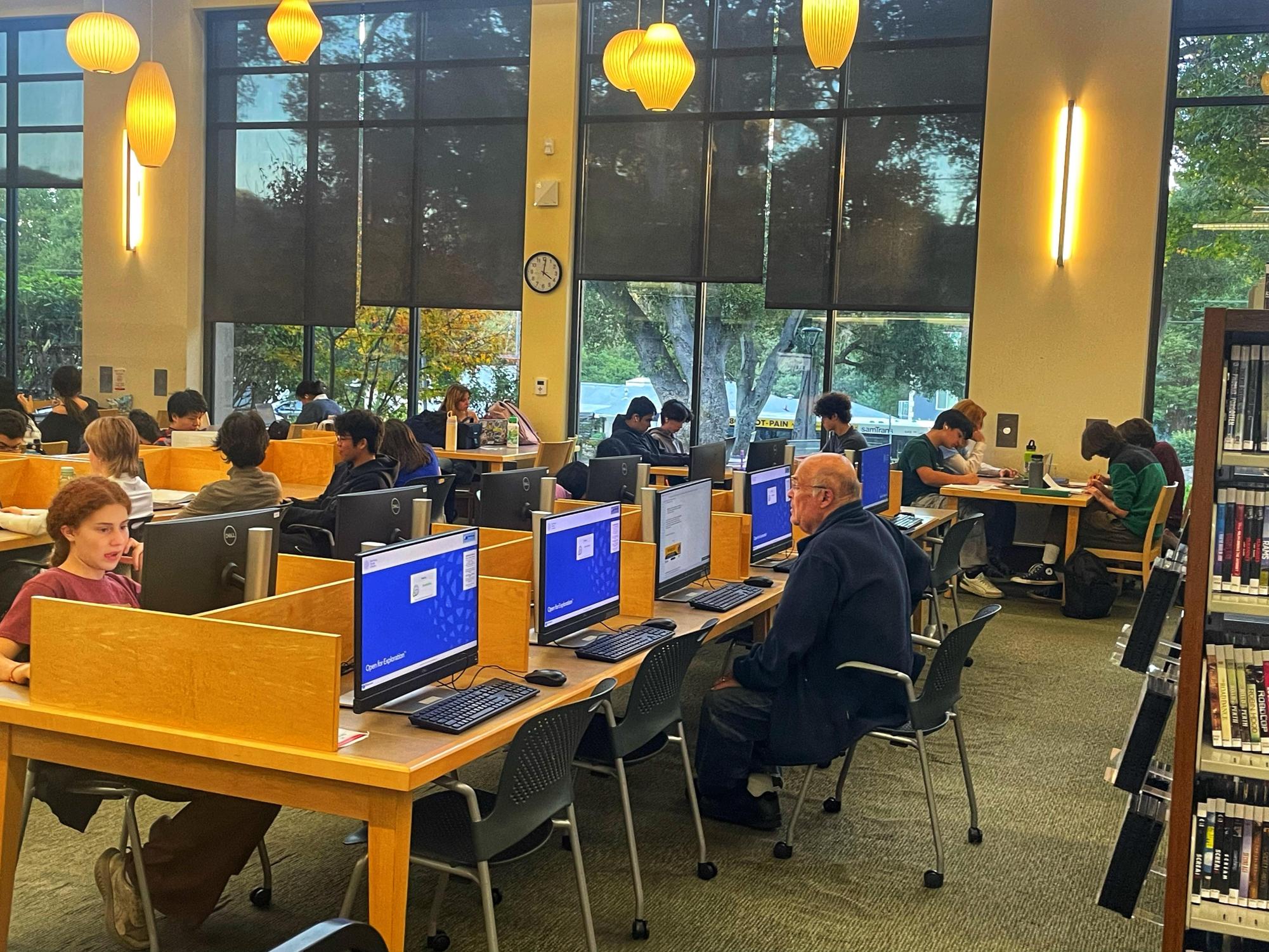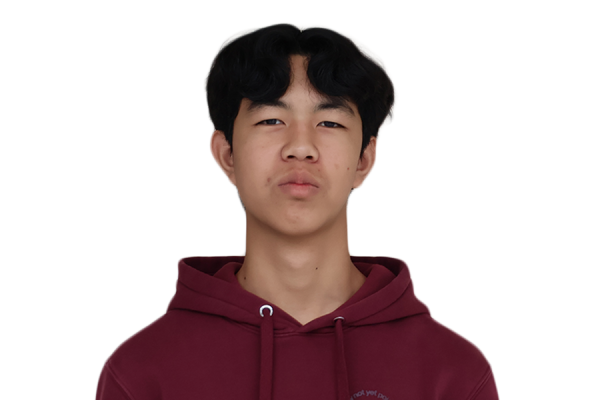In the corner of a bustling café, a group of teens huddle over steaming mugs, laughter mixing with the hum of conversation. These cozy gatherings are just one example of the “third places” where young people can connect, study, and breathe freely.
These spaces, often referred to as “third places,” provide a necessary refuge where teens can socialize, study, and decompress.
These “third places” have become essential in providing a social outlet beyond school and home. From late-night study sessions at a cozy coffee shop to casual meetups in local parks, these spaces are where teens can balance stress, bond with friends, and find a sense of independence.
Teens increasingly seek out these neutral grounds to recharge and reconnect. With mental health a growing concern, these third places are proving to be more than just hangouts — they’re essential parts of teenage life, demonstrating how important it is for communities to support these valuable spaces.
Effects on mental health
For many students, these third places provide a much-needed break from the structure and intensity of their daily routines. These spaces are crucial for creating community bonds and encouraging youth development. According to the National Library of Medicine, extensive research has shown how third places play a huge role in developing communities and also promoting overall well-being in urban areas in the United States. Access to third places may be especially important for social lives and also economic life in rural communities. Rural areas with high rates of poverty and low employment utilize these third places for their mental health.
Walter Ng, the Program Coordinator for StarVista Crisis Services, focuses on mental health awareness and suicide prevention in San Mateo County.
“My role at StarVista is to raise awareness about mental health and suicide prevention. I accomplish that through presentations at schools, organizations, and agencies, reducing stigmas and increasing knowledge of local resources,” Ng said.
Ng says access to these spaces allows teens to manage their mental health better and build stronger, more supportive peer networks.
“Those who actively go to their ‘third place’ feel less academic pressure as these environments provide social support and a sense of belonging. This encourages positive coping mechanisms and helps foster resilience,” Ng said.
Ng advises students and parents to be open to trying new activities and locations to find the right fit for a third place. He emphasizes that experimenting with different environments, such as libraries, cafés, or community centers, can help students discover spaces where they feel comfortable and engaged.
“Experimentation. Try it and find out. I think finding the right third place outside the home and school is essential for positive social experiences, but in order to do that, you have to try new things. Students can expand on their interests by joining clubs, attending local events, and utilizing community resources like libraries while staying open to new experiences,” Ng said.
In addition to reducing stress, third places promote the development of social skills that are often overlooked in traditional school settings. Ng explains that these environments encourage valuable interactions, such as active listening and empathy, which may not always be emphasized in academic contexts.
“Neutral spaces outside the home can positively influence youth by building confidence, fostering social skills, and allowing exploration of interests through engagement,” Ng said.
Neutral spaces, such as libraries, cafés, and parks, provide a relaxed environment where youth can build confidence and develop essential social skills. These spaces allow teens to engage in conversations and activities without the pressure of school hierarchies or home expectations, fostering a sense of freedom.
“These settings encourage further development of empathy, active listening, and coping mechanisms that may not be emphasized as much in a traditional school atmosphere,” Ng said.
Third places serve as important locations for many across the world. In a world where mental health is an increasingly urgent issue, third places can make a meaningful difference in the lives of young people, helping them navigate the challenges of adolescence.
Essential third places: libraries
Libraries, for example, have become more than just places for studying. Sonia Delgado, a librarian with Redwood City Public Libraries, explains that libraries offer many resources for students.
“The cool thing about our library is we have a teen center: it’s a space just for teens. So anybody who’s not a teen cannot be in there,” Delgado said.
Delgado also highlighted how their teen center serves as a dedicated space for grades 6-12. This allows a safe environment for many teens and provides a space where teens can be themselves.
“Libraries are not all about academics. They’re more of a place of leisure where people can come to hang out, have a good time, de-stress, and access resources,” Delgado said.
With gaming personal computers (PCs), consoles, Virtual Reality (VR), and a makerspace, the library offers a blend of leisure and creativity. Delgado noted that activities like TikTok filming and gaming, especially Fortnite, are popular trends among visitors. “I’ve seen a lot of teens engaging in social media…but in person, video gaming right now is pretty big,” Delgado said.
Beyond entertainment, the library addresses needs that schools may overlook, such as food security and mental health support. Delgado explained their partnership with Safe Space and its efforts to provide free snacks and meals for teens.
“We do give them snacks and a couple of noodles, all for free. Many kids have food insecurities that cannot be addressed at schools,” Delgado said.
To ensure the library remains a welcoming environment, staff focus on respect and inclusivity, creating a safe haven where teens feel accepted and valued.
With designated areas for group work and personal projects, libraries foster both education and socialization. According to the National Library of Medicine, libraries welcome members of the public regardless of their age, and socioeconomic status. They provide access to information and educational services. In addition to supporting education, they foster socialization through public talks, events, group workspaces, and interior cafes. Many students feel compelled to work in these libraries due to the many aspects within them.
Through programs like financial literacy workshops, college prep classes, and maker space tutorials, the library supports teens’ personal and professional growth.
“If you want to learn how to make a shirt or create your own brand, we’ll show you how without spending any money,” Delgado said.
By evolving to meet the changing needs of younger generations, the library balances digital resources with physical spaces for socialization. Delgado emphasized the importance of giving teens a voice in shaping programming and activities.
“We want to learn from them what they want to see here…whether it’s learning to write a scholarship essay or how to do makeup, we’ll make it happen,” Delgado said.
Many libraries offer flexible spaces that can be used for a variety of purposes, including group study, creative workshops, or even casual hangouts. These spaces are often equipped with comfortable seating, computers, and materials that encourage collaboration and creativity.
Local third places like libraries, cafes, parks, and recreational centers, often play a significant role in shaping local community dynamics. For teens, these businesses offer more than just a product or service; they provide a space for social interaction, self-expression, and even personal development.
These businesses help create an inclusive space for teens to unwind in a relaxed atmosphere, offering something both casual and functional. Business owners are becoming increasingly aware of the importance of these spaces for young people. Many businesses specifically cater to a teen audience by offering discounts, hosting special events, or curating experiences that resonate with the interests and needs of a younger demographic. According to the National Institute of Standards and Technology, businesses can collaborate with community organizations to enhance quality of life, such as through workforce development and addressing the community.
Whether through mentorship, offering a safe space for socializing, or supporting mental health and community engagement, third places help teens thrive outside of their traditional environments, contributing significantly to their overall well-being and development.
Fostering growth and community connection
Many high school students across the nation find third places for healing and a place for socialization. As many youths use these third places, many can see that third places are important to the communities and people in these communities.
“I go to the library almost daily, normally to study until my parents come to pick me up. I also go to tennis courts just to play sports and have fun,” said Alexander Kan, a freshman at Carlmont. “I think third places bring my mood to be calm and my stress levels to go down because it’s a nice place to unwind.”
For many teens, these spaces offer a calming effect that helps reduce stress levels. In contrast to the pressures of school or home life, third places provide an opportunity for teens to escape and recharge.
“Spaces like libraries or cafes usually provide quiet spaces for me to study and do my homework, ” Kan said. “It helps me with my self-confidence because I feel like I could do a lot there or just do what I want.”
Ultimately, these spaces provide more than just a physical location — they help teens build confidence and independence by allowing them to engage in activities at their own pace and on their own terms.
For teens like Kan, these third places are more than just a place to pass the time; they are vital environments that contribute to overall well-being and personal growth.
One of the most significant roles of youth centers is to create a safe space for young people to go outside of school hours. These centers often act as a refuge from potentially unsafe environments, offering teens a place where they can relax, be themselves, and avoid harmful situations. According to YouthPower, USAID, youth centers play a crucial role in providing safe spaces for young people, particularly outside of school hours, offering a refuge from potentially unsafe environments. These centers can foster empowerment, resilience, and community connection.
“It’s very empowering that I get to work for a department that facilitates programs and spaces that people can occupy and utilize in their free time, and it’s what they choose to do in their free time,” said Emma Licko, the recreation coordinator in the City of San Carlos Youth Development department.
Youth development programs are focused on teaching practical life skills that help teens prepare for adulthood. Programs in youth centers often include financial literacy workshops, leadership training, career readiness, and volunteer opportunities.
In addition to recreational programs, many youth centers also provide academic support, such as tutoring, mentoring, or assistance with homework. These programs are especially beneficial for teens who may struggle academically or come from families with limited resources. Programs that promote physical activity, like the Youth Center’s daily programming, help teens explore new interests while fostering connections with peers. This environment encourages both socialization and personal growth.
“Third places help develop children, and I think it’s an important aspect of many lives,” Licko said. “There is a lot of personal growth from learning from other kids, like study habits and ways that students study efficiently.”
Creating activities that align with teens’ interests and schedules is another key factor in the success of these programs. Licko stressed the importance of offering programs that meet teens where they are. By addressing teens’ needs and providing flexible opportunities, these spaces offer an important foundation for developing leadership skills and social connections.
“I think it’s not breaking that barrier, but also trying to meet teens where they’re at with what program because teens are very busy and have a lot going on in a lot of extracurricular activities,” Licko said.
Through programs that encourage exploration and collaboration, these spaces give teens the opportunity to develop confidence and valuable life skills.
“It’s amazing to see teens get involved in community programs and challenge themselves to help others. It gives them a sense of purpose,” Licko said.



